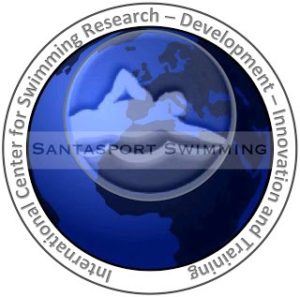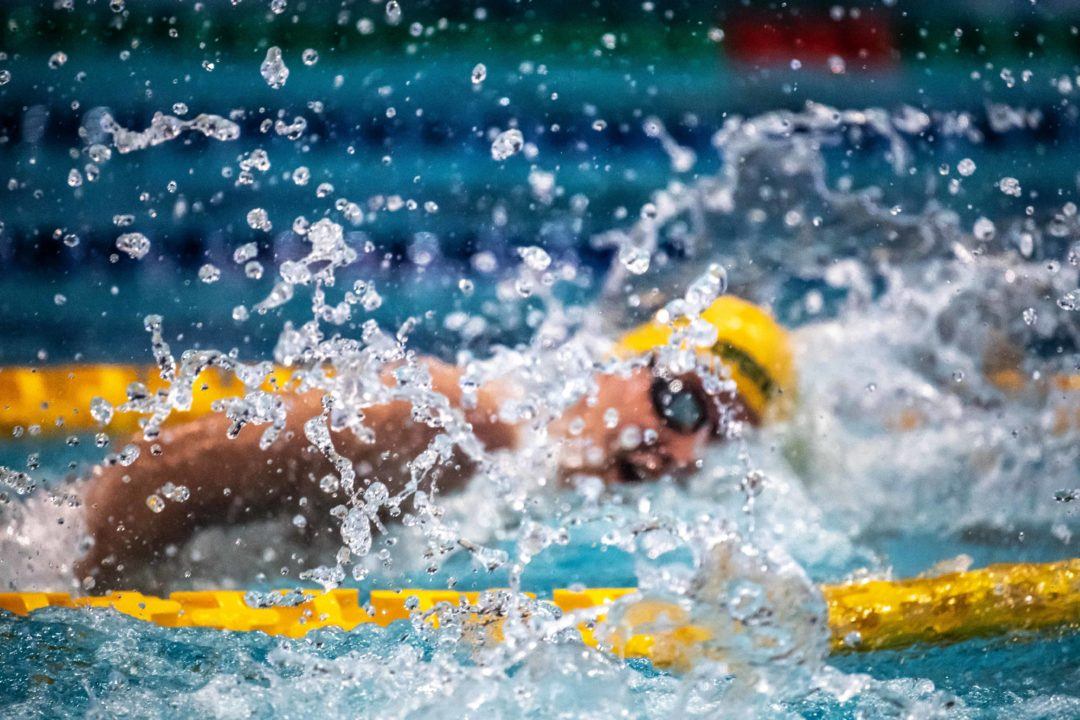Courtesy of Jakka Shemeikka
As a part of our Research, Development and Innovation functions, Olympic Training Center Rovaniemi is running a competitive swimming development program called ‘Modern Dryland Training’. It started from a simple idea of creating better solutions to dryland training for swimmers and coaches globally. Along the way, the focus has shifted to a bigger picture. Today it seems paramount, that we also raise topics that have a modern approach about the synergy of dryland and pool training.
Having your dryland training programmed in a right way might be a key to successful training results in the pool. Over a time there has been goals affiliated with dryland exercises that swimmers should pursue. These goals normally come from elite athlete training scores. The reps with certain extra weight in pull-ups or the amount of weight the athlete is able to squat, just to give few examples. Goals are important, but we already know that strength alone is not the answer. Yes, strength plays an important role in the big picture, but what are the building blocks of the bigger picture itself, and what does it actually take to be a strong swimmer?
Structure of dryland training
Dryland training can help the most when used from the early steps of swimmers career. Not only it helps to prevent injuries, but it can also help control swim technique and enhance the performance. This does not mean that you should rush into doing push-ups, pull-ups and squats, as there are qualities you should learn to control first. Here’s a short introduction of each category and a progression model we have found to be valuable.
Connection points are the key element of controlling the swim technique, keeping the athlete safe from injuries and making it possible to get full benefit from movement control and strength gains. Connection points consists of Shoulder Girdle, Core and Hips. Connection points should be the main focus, when starting a dryland program.
Fundamental movement skills consist of basic movement abilities from balance to throwing a ball. These basics also act as building blocks for more complex skills. Before loading athletes with weights, or even body weight training, you should make sure that they know how to move in different planes and directions. You can perform connection point and movement skills exercises at the same time, but I bet that you’ll see the help that connection points can have on controlling the basic movement.
Strength training in its multiple forms is one of the corner stones of dryland training. From body weight training to Olympic lifts, strength training is the fine tuning element of dryland training. To be able to get full benefit of strength training it is important to have the connection points and movement skills under control.
Functional lines. After controlling the muscles and movement, it is good to start implementing functional line exercises. There is no need to wait reaching certain strength levels, as it will be beneficial to perform traditional strength training and functional line training at the same time. It will definitely teach more about how to body functions and deliver additional help with pool performance.
Testing your connection points
The idea of this article was to raise awareness towards the progressive nature of dryland training and the athlete’s readiness for it. Here’s a great test to see if someone has enough control and strength in their connection points to advance in other forms of dryland. This test also indicates that is the athlete able to utilize general strength gains in his swim performance. Pay attention, as there are many details to this test. You really have to build it one by one and addition to connection point conditioning it can also bring out possible flaws in mobility.
Olympic Training Center Rovaniemi is one of the six Olympic Training Center’s in Finland. Together with a diverse network of Universities, sports federations and associations, research institutes and other experts, we are able to offer a wide level of education in multiple fields of sports and well-being as well as in different sports.
Santasport Swimming is growing International research development and innovation program for swimming. Our goal is that in the next five years we will run research on both learn to swim and high- performance swimming using our previous experience and soon to be built new aquatic facility. Thru our research work, we are hoping to offer new insights on swimming development.

Santasport


I don’t see the importance of calling the Shoulder Girdle, Core and Hips, connection points. Yes, the Shoulder Girdle connects to the arms, the Core connects to the other connection points and the Hips connect to the legs, but I think their true importance is creating power. Individually calling them something like power centers and collectively, power train, is more suggestive of their primary function.